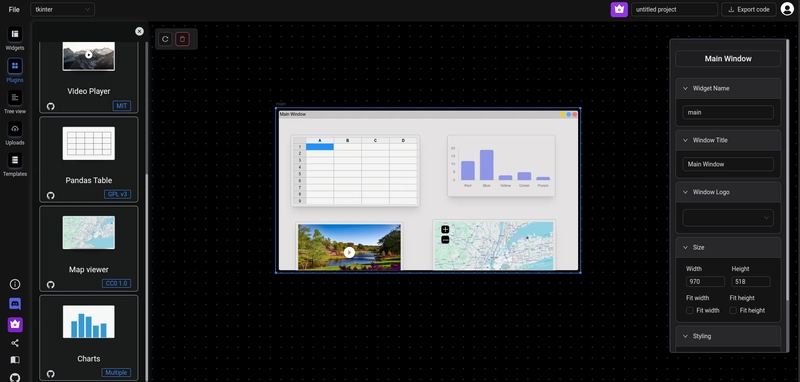Navigating the Challenges of Hard Time Finding New Employees in Today’s Job Market
Discover effective strategies for overcoming the hard time finding new employees in today’s competitive job market. Learn how to attract top talent and streamline your hiring process to build a strong workforce.

Key Takeaways

- Understanding the Job Market: Recognize that current hiring challenges stem from a competitive landscape, evolving candidate preferences, and a significant skills gap.
- Remote Work Preference: Job seekers prioritize flexibility and remote opportunities, which impacts how businesses attract talent and structure job postings.
- Economic Impacts: The labor shortage, highlighted by millions of job openings vs. job seekers, increases competition for talent and raises labor costs for small businesses.
- Employee Retention Focus: Implementing retention strategies such as employee development and enhanced benefits can mitigate turnover and improve team stability.
- Innovative Recruitment Strategies: Utilize employee referrals, recruitment software, and staffing agencies to streamline the hiring process and broaden the talent pool.
- Diversity Hiring: Fostering a diverse workforce not only builds a more inclusive organization but also expands the range of skills and perspectives within your team.
In today’s competitive job market, many businesses are struggling to find new employees. With a growing skills gap and shifting workforce expectations, attracting top talent has become more challenging than ever. If you’re feeling the pressure to fill positions, you’re not alone.
Understanding the reasons behind this hiring crisis is crucial for developing effective strategies. From evolving candidate preferences to the impact of remote work, various factors play a role in this recruitment dilemma. Let’s explore the key challenges and discover actionable solutions to help you navigate these turbulent waters and build a strong team.
Understanding the Challenge of Hard Time Finding New Employees

Navigating the current job market poses significant challenges for small businesses seeking to attract qualified employees. Awareness of the underlying issues can aid in developing effective recruitment strategies.
Current Job Market Trends
Current job market trends highlight a competitive landscape where job candidates prioritize flexibility, career growth, and workplace culture. A preference for remote opportunities has surged, influencing job postings and the way businesses approach talent acquisition. Understanding these trends is essential for tailoring job descriptions that resonate with potential hires. Adopting innovative recruiting methods ensures you remain visible to top talent in your industry while aligning with evolving candidate expectations.
Impact of the Labor Shortage
The labor shortage directly affects small businesses, increasing staffing requirements and raising labor costs. With fewer available candidates in the talent pool, recruitment processes experience delays, leading to prolonged job openings and reduced team productivity. Employee turnover amplifies these challenges, necessitating a focus on employee retention strategies. You might explore options such as employee development programs, enhanced employee benefits, and a positive hiring process that fosters long-term employee satisfaction and engagement. Prioritizing these aspects strengthens your organization’s ability to navigate a challenging hiring environment.
Factors Contributing to Hard Time Finding New Employees

Numerous factors contribute to the challenges you face in finding new employees. Understanding these elements aids in navigating the complexities of today’s job market.
Economic Influences
Economic shifts strongly impact small business staffing. The current labor market reveals approximately 8 million job openings in the U.S. against only 6.8 million unemployed workers, highlighting a significant shortfall of available candidates. The disparity between job vacancies and job seekers complicates recruitment efforts, making it harder to fill positions. Increased labor costs also strain your budget, as competition for talent drives salaries higher. Adapting your recruitment strategy may involve leveraging recruitment software or staffing agencies to widen your talent pool.
Skills Gap in the Workforce
A considerable skills gap exists in the workforce, hindering effective talent acquisition. Many job candidates lack the necessary skills or qualifications outlined in your job descriptions. As small businesses seek to fill roles with specific skill sets, the limited availability of qualified candidates leads to delays in the hiring process. To address this gap, consider investing in employee development programs. Training existing staff can enhance their skills while improving employee engagement and satisfaction. Prioritizing diversity hiring can also expand your talent pool and foster a more inclusive workplace culture.
Strategies to Overcome Hard Time Finding New Employees

Finding new employees remains a significant challenge for small businesses. Implementing effective strategies can enhance your recruitment process and build a strong workforce.
Enhancing Recruitment Processes
Enhancing recruitment processes attracts quality candidates and retains them. Here are key strategies to consider:
- Utilize Employee Referrals
Tapping into your existing employees’ networks can streamline hiring. Referral programs often lead to faster placements and higher retention rates, as referred candidates tend to align well with your workplace culture.
- Optimize Job Postings
Craft clear and engaging job descriptions that outline job responsibilities and highlight your employee benefits. Use industry keywords to attract the right talent and ensure your job listings appear in search results.
- Implement Recruitment Software
Streamlining your recruitment process through HR tools can simplify candidate screening, manage applications efficiently, and help track hiring trends in your industry.
- Leverage Staffing Agencies
Collaborating with staffing agencies can expand your talent pool. These agencies maintain databases of pre-screened candidates, saving time and resources during the recruiting phase.
- Adopt a Flexible Approach
Offer flexible work arrangements, including remote opportunities or part-time positions. This appeals to a broader range of job candidates, particularly those seeking work-life balance.
- Focus on Workforce Diversity
Prioritizing diversity hiring can enhance your team dynamics and broaden your talent pool. Consider diverse backgrounds when recruiting to encourage a variety of perspectives within your organization.
- Engage in Training and Development
Investing in employee development programs fosters loyalty and motivation. Ongoing training opportunities not only refine skill sets but also support career growth, reducing staff turnover.
By applying these strategies, you can improve your hiring process, attract skilled job candidates, and build a more engaged and productive workplace.
Conclusion

Navigating the current hiring landscape can feel overwhelming but understanding the challenges is the first step toward overcoming them. By adapting your recruitment strategies and focusing on what today’s candidates value you can position your business as an attractive option. Emphasizing flexibility career growth and a positive workplace culture will resonate with potential hires.
Investing in employee development and prioritizing diversity can also broaden your talent pool. Remember that the right approach can transform your recruitment process and help you build a strong engaged workforce. With the right strategies in place you can turn these challenges into opportunities for growth and success.
Frequently Asked Questions

What are the main challenges businesses face in hiring new employees?
Businesses are contending with a competitive job market, a significant skills gap, and evolving workforce expectations. Candidates are increasingly prioritizing flexibility, career growth, and workplace culture, making it challenging for companies to attract top talent.
How is the remote work trend affecting recruitment strategies?
The rise in remote work preferences has shifted candidate expectations, prompting businesses to adapt their job postings and recruitment tactics. Companies need to offer flexible work arrangements to remain competitive in attracting skilled candidates.
What impact does the labor shortage have on small businesses?
The labor shortage is increasing staffing requirements and labor costs for small businesses, leading to delays in recruitment and reduced productivity. Many small businesses are struggling to find qualified employees due to this shortage.
Why is there a skills gap in the workforce?
The skills gap exists because many candidates lack the necessary qualifications that businesses require. This discrepancy complicates recruitment efforts and often leads to longer hiring times for employers.
What strategies can small businesses use to improve their recruitment processes?
Small businesses can enhance their recruitment processes by investing in employee development, utilizing employee referrals, optimizing job postings, implementing recruitment software, and adopting flexible work arrangements. Prioritizing diversity can also expand their talent pool.
How can businesses attract more skilled candidates?
Businesses can attract more skilled candidates by offering competitive salaries, fostering a positive workplace culture, promoting professional development opportunities, and implementing flexible work options that meet candidates’ evolving needs.
Image Via Envato
This article, "Navigating the Challenges of Hard Time Finding New Employees in Today’s Job Market" was first published on Small Business Trends






































































